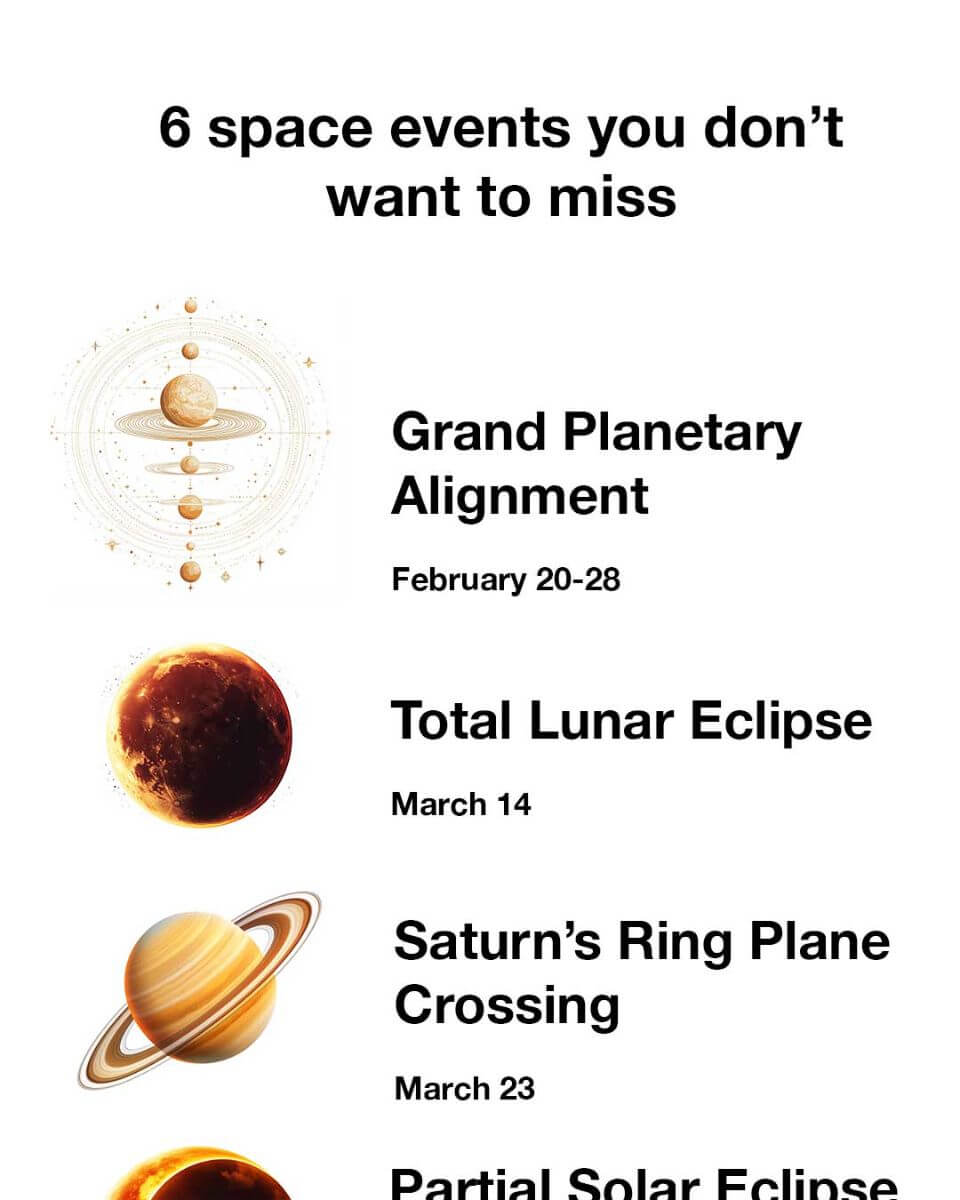Our universe is filled with breathtaking wonders—from planetary alignments to meteor showers—that not only intrigue the eye but deepen our curiosity about the cosmos. Watching these events can strengthen our understanding of space and connect us to the age-old tradition of stargazing. Below are six upcoming celestial events that are sure to capture the attention of skywatchers, whether you’re an enthusiastic beginner or a seasoned astronomer.
1. Major Planetary Alignment (February 20–28)
This rare spectacle occurs when several planets line up in the sky from Earth’s point of view, forming a straight-line configuration. In this upcoming alignment, Mars, Jupiter, Saturn, and Venus will appear closely grouped, creating a brilliant display in the night sky. Not only is this event visually striking, but it also offers insight into the gravitational interplay between these celestial bodies.
2. Total Lunar Eclipse (March 14)
Also known as a “blood moon,” a total lunar eclipse happens when the Earth passes directly between the sun and the moon. During this alignment, Earth casts a shadow over the moon, causing it to glow with a deep red hue due to atmospheric scattering of sunlight. This dramatic lunar event will be visible from multiple continents, making it a great photo opportunity for night sky enthusiasts.
3. Saturn’s Ring Plane Crossing (March 23)
Roughly once every 15 years, Saturn’s rings become nearly invisible when viewed from Earth. This is because they appear edge-on, making them hard to detect even through telescopes. During this rare orientation, observers have a clearer view of Saturn’s moons and ring structure. The event offers astronomers a valuable chance to study the planet’s unique ring dynamics and interactions with its satellites.
4. Partial Solar Eclipse (March 29)
A partial solar eclipse takes place when the moon blocks a portion of the sun’s disk, leaving a crescent of sunlight visible. Though not as dramatic as a total eclipse, this event still provides a memorable skywatching experience. Safe solar viewing equipment is essential for observing this event, which will be visible in various regions. It’s a great moment to witness the precise motions of our solar system in action.
5. Lyrid Meteor Shower (April 22)
The Lyrids occur each year in April as Earth passes through remnants left behind by Comet Thatcher. This meteor shower is known for producing bright, fast-moving streaks of light, with up to 20 meteors visible per hour in ideal conditions. The Lyrids are a favorite for many because of their consistency and the possibility of spotting dramatic fireballs lighting up the sky.
6. Triple Planet Conjunction (April 25)
This rare phenomenon happens when three planets appear close together in the sky for a brief period. The upcoming conjunction will involve Mercury, Venus, and Jupiter, offering an awe-inspiring view. Aside from the visual beauty, this event is a fascinating example of planetary motion and provides a unique opportunity to learn more about how planets travel along their orbits.
Conclusion: Why These Events Matter
Watching space events like these isn’t just about admiring the view—it’s about forging a deeper connection with the universe and exploring our place within it. These celestial happenings inspire curiosity and offer a tangible reminder of the intricate forces at work beyond our planet. Whether you’re an experienced skywatcher or simply someone who enjoys looking up on a clear night, these remarkable events give you a front-row seat to the wonders of space.
